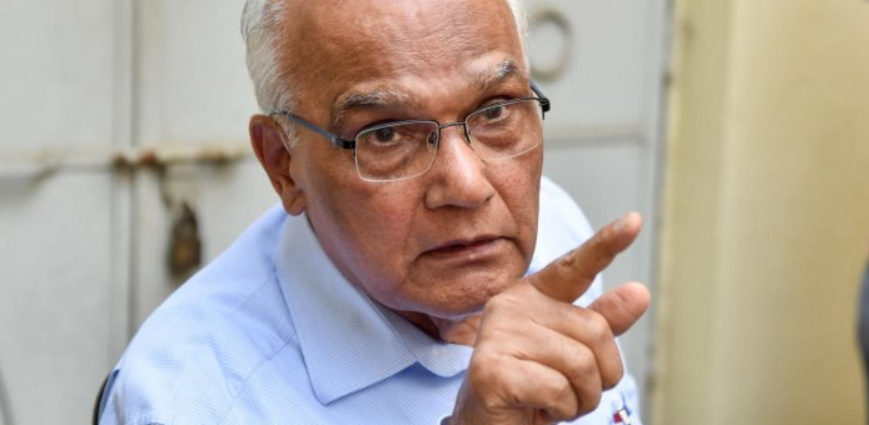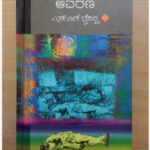The literary enthusiasts were greeted with the news – the famous novelist Dr. SL Bhyrappa has been honoured with Padma Bhushan. It was a long pending recognition, denied all these years for his righteous writings and the firm beliefs that got reflected in his works.
To understand Bhyrappa’s works, we must visit the literary tradition of India a bit.
The glorious classical Indian aesthetics of rasa, dwani, and auchitya (sense of propriety) gave a beautiful expression of sublime philosophy.
It was not just the language usage that gave such profound works and traditions but the great thinking that went behind, insight and wisdom behind every work that brought out the human emotions applicable to all times and regions.
This scholarly tradition valued merit and each of the successors had the influence from the predecessors and there was a sense of bonhomie among the literary circles.
This literary tradition of adhering to the long-held traditions was maintained in the two languages down south Kannada and Telugu till about the early 1960s.
The advent of the Nehruvian era almost disrupted this long tradition. The new generation of writers who towed along the lines of Secularism and left-liberal ideologies started dominating the scene. These ideologies were dear to Nehru. Anything that portrayed the Bharatiya culture, traditions, philosophies, and viewpoints was looked down upon.
It was not about merit, talent, and scholarly pursuits that brought fame and name. Those who complied with this philosophy managed to get academic positions, grants, and honours.
Dr. Bhyrappa once was entrusted to the NCERT regarding the textbook curriculum. The scene was dominated by the leftists so much that he had to resign from the position.
However, he resisted and did not let the prevailing state-sponsored ecosystem influence him. He concentrated on his work which eventually gave the answers to the same ecosystem which had denied the due credit. The readers who identified themselves with more than fifty different characters that he created in his works, adored and eulogized his works that made his works popular.
What contributed to Dr. Bhyrappa coming out with twenty-four novels between 1958 till 2017 with the readership maintained all along? Is it more than just storytelling? Is it due to the extremely sensitive issues he has dealt with in his novels? Is it because of the thematic sensitivity that touches human emotions?
To bring in sensitive topics that are closer to reality touching the human dimensions requires life experiences. Him being born into a poor family had to go through the hardships of poverty, working in small-time jobs from selling incense sticks to working as a railway porter, to teaching juniors in college gave the early exposure to the world.
Later, through his vast reading of both Indian and western works of literature, research, traveling, and interactions, his background in philosophy widened the horizon of his imagination which resulted in aesthetically touching characterisation in his novels. He has a critical mind to analyse every problem be it in the present or that he foresaw in the future and analysed from a societal perspective. Many did not see through Gyanvapi mosque and Shivalinga he brought out in Aavarana that would come to the light fifteen years later. He combined research with novel writing, something he used in many novels, particularly in Aavarana (2007) the novel which was about the barbarism of Islamic invaders, and the varied dimensions of Muslim dominance, many of them continued. The work that has stood out as an exemplary research work based on facts and proofs silenced the critics.
The topics he chose for each of his novels have an intimate relevance to society. In Dharmashree (1961), he dealt with the Hindu-Christian cultural encounter. A believer of Sanatana dharma, he converts to Christianity to marry a girl from Christianity. The novel explored his inner search for true love versus religion and the aggressive proselytization by Christian missionaries.
In Vamshavriksha (1965), one of his best-selling novels, he brought out the conflict between orthodox traditions and with changing lifestyles and values of this generation and dubiously claimed genealogical identity.
Matadana (1965) dealt with politics, and Nayi-Neralu (1968) dealt with reincarnation. Tabbaliyu Neenade Magane (1968) brought out the Indian and the western outlook toward village life and cows. Grihabanga (1970) is set in pre-independence times, a woman’s relentless struggle against poverty, abuse, and famine, the bold mother steps out of the house to earn a living. The story cast on his own life story which revolved around the poverty-ridden life, Dr. Bhyrappa reckons. Grahana (1972) analysed the dichotomy between a sanyasi and a householder.
Parva (1979) is a novel re-interpreting Mahabharata characters. Tantu (1993) is a critique of capitalism and degenerated politics. The story encompasses the whole of India and most of the spheres like education, communal politics, business, political corruption, and the destruction of traditional moral values. The novel ends with the clamping of the so-called emergency by Indira Gandhi in 1975.
In Uttarakhanda (2017), he revisits Ramayana, analysing the dharmic aspects which guided Rama. The book was so popular that, within a few hours of its release, got sold out.
Sartha (1998) dealt with the times of Buddhism in India around the eighth century when Buddhism started degenerating. The philosophical debate of Mandana Mishra,Adi Shankara,Kumarila Bhatta and Ubhaya Bharathi times figure out in the novel.
Dr. Bhyrappa would get so engrossed in each of the works that when he was writing Sartha, to understand the Sanskrit verses about that era, he would go walking in the morning hours with a famous Sanskrit scholar HV Nagaraja Rao with the strict instructions that the conversations had to be in Sanskrit only for him to grasp the language. Later when the book became a success, it was chosen for Sanskrit translation, and it was the same HV Nagaraja Rao who translated and won the National Sahitya Academy award for the best translation.
It is difficult to write about Mandra (2002) the magnum-opus classic novel based on Hindustani music and ragas something dear to Dr. Bhyrappa. For him, music is a powerful medium of human expression. The influence of music on him was so much that as early as 1960, the novel Jalapaata had the same musical background. The six-hundred-page novel is a huge repertoire of Hindustani ragas and very few works where the hero is a musician. According to him, this was a thesis on art and morality.
Two of his novels, Grihabanga and Datu have been translated into fourteen languages. Fifteen of his novels and three non-fictional novels have been translated into several other languages and three novels have been translated into Sanskrit.
The great epics of Ramayana and Mahabharata are grasped by ordinary readers who are not exposed to the literature due to the Rasa (aesthetics) involved. Loosely translated, it is “emotive feelings” that it touches. Bhyrappa’s works can be listed in this same Rasa feeling that it brings in with the readers, each character steering the readers to a different plane often in intense, poignant, and complex emotions.
His works have enthralled average readers, and they have motivated moviemakers to make movies(Tabbaliyu Neenade Magane, Vamsha Vruksha, Grihabanga), his works have been used in the special art form called Avadhana by Shatavadhani Dr. R Ganesh who observes ”Bhyrappa’s works have been an epitome of a showcase of Indian culture to the world in the perspective of modernism”. With this preoccupation with Indian cultural roots of his works, he should be called a national novelist, not merely a Kannada writer.
How could he sustain for such a long time in the literary field? It is not only mental stamina but physical fitness very vital for a good writer Dr. Bhyrappa keeps stressing. Regular yoga, exercises, and discipline in food habits have kept his physical fitness for the long hours he has spent writing, which is useful advice for young writers.
A verse from Kuntaka’s Vakroktijivita
निरन्तररसोद्गारगर्भसन्दर्भनिर्भराः ।
गिरः कवीनां स्थास्यन्ति न कथामात्रमाश्रिताः ॥
Merely writing a story is nothing great but packing it with emotions is what will make it relevant for all times.
The literary legacy of Dr. Bhyrappa fulfilled that aspect by transcending time and space.
![]()
- Ugadi the dawn of a new beginning - March 22, 2023
- The legendary life of master story teller-Dr SL Bhyrappa - January 27, 2023
- Dr. Shankar Rajaraman: The mind healer turned mind stimulator - January 25, 2023



